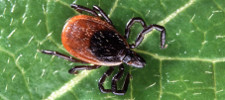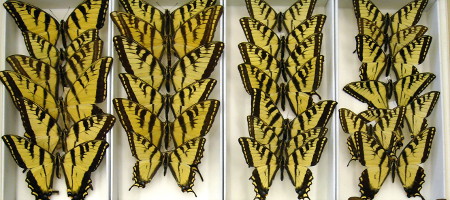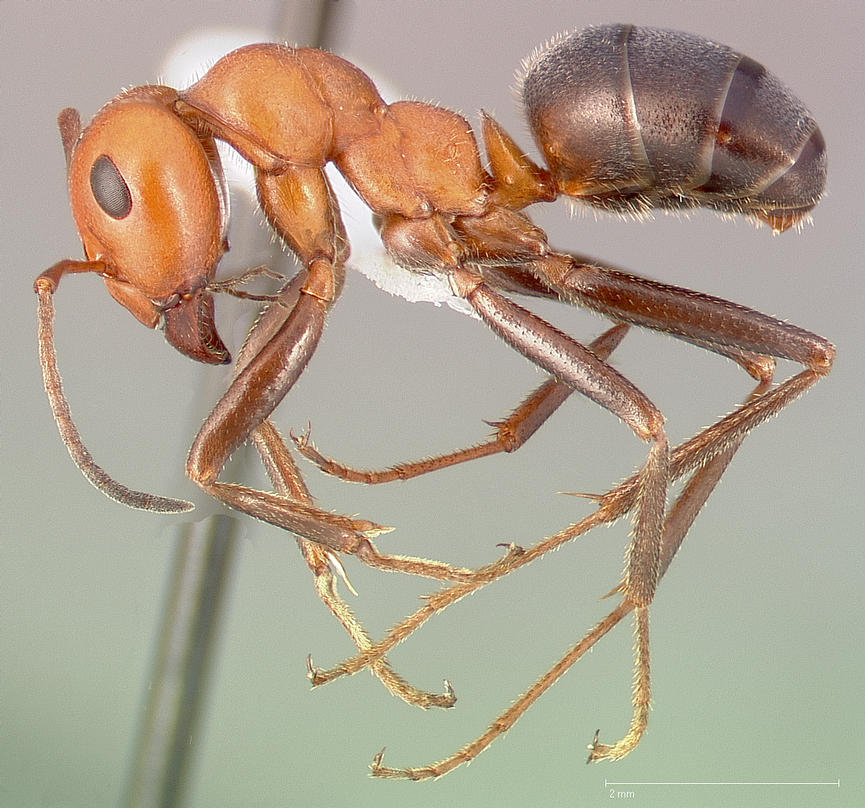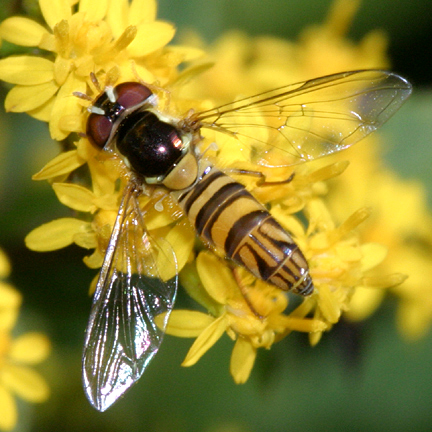Wallis Roughley Museum of Entomology
Photo credit: Pat MacKay and Bob Lamb
Welcome to the Wallis Roughley Museum of Entomology

The Wallis-Roughley Museum of Entomology (formerly the J.B. Wallis Insect Museum) is one of the largest insect collections in Western Canada. The collection mr bet Canada contains approximately 2 million specimens, with about 450,000 in specimen drawers and the remainder in the wet collection. The museum is the heart of the Entomology Department at the University of Manitoba and is critical to teaching, research, and extension in entomology in Manitoba.
History of the museum
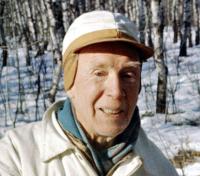
The origin of the J.B. Wallis/R.E. Roughley Museum of Entomology coincides with the arrival of A.V. Mitchener at the Manitoba Agriculture College in about 1919. Mitchener began his days at the university in the Department of Horticulture, but he founded the Department of Entomology sometime during 1921. Mitchener was a stickler for detail, and he kept records of every insect enquiry that came to his attention. Each enquiry was recorded on a separate slip of paper, all of which are still housed in the Department of Entomology today, along with the data he gathered on honey flow. Although there is no indication he was a dedicated collector, he also prepared many of the insects submitted by the public and deposited them in curated cabinets. He also appears to have gleaned specimens submitted by students for their insect collections.
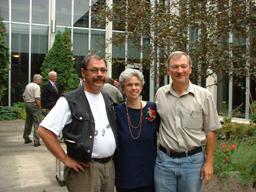
The Mitchener years were a period of slow growth for the collection, and it was not until J.B. Wallis arrived on the scene that the museum became a focus of curatorial intensity. J.B. was a teacher, principal, and later, a school superintendent in the Winnipeg school system. He had a passion for insects, especially beetles, and collected avidly in many parts of the province, and even participated in the Northern Insect Survey in the early years of his retirement. J.B. was a specialist in water beetles and tiger beetles, but he collected quite broadly in his travels across the insect world. He interacted extensively with the Criddle family at Aweme, and with Ralph Bird, an entomologist and ecologist in Brandon. J.B. was hired at one point by the Department to assemble a representative collection of Manitoba insects. This collection was housed for many years in an old silo, until it was moved into the departmental undergraduate teaching lab in the new Animal Science Building. This
collection still graces the back wall of the lab, having had only some of the faded Lepidoptera replaced. It is rather amazing to see our students today standing along the back of the lab, noting the diversity of the collection and the ancient dates on many of the specimens. Along the way, J.B. added a large number of specimens to the departmental museum, and he spent many long hours curating the collection in hand-constructed, wooden drawers and cabinets. It was a tribute to his contributions that the museum was dedicated in his honour on 22 September, 1988.
Grant Robinson assumed many of the extension and curatorial responsibilities when he was hired in the Department in 1953. Grant was primarily interested in aphid taxonomy, and he collected widely in Manitoba throughout his career and into retirement. By the time he decided to disperse his aphid collection, he had assembled approximately 30,000 slides, on many of which were mounted two or three specimens. One third of the slides went to the Canadian National Collection, one third went to the Smithsonian Institution, and one third remained in the Department, a valuable resource for this enormously important group of insects.
In 1978, the collection was estimated to contain about 98,000 specimens, largely collected by J.B. Wallis and A.G. Robinson. Terry Galloway and Rob Roughley were hired in 1977 and 1982, respectively, and their collecting and curatorial efforts, along with contributions from many of the undergraduate and graduate students in the Department, resulted in a period of rapid growth for the Museum. By 1992, the Museum was estimated to house about 300,000 specimens. This growth resulted in serious crowding, and workspace in the Museum became limiting. Space became critical when we acquired the collection from the Agriculture Canada Research Station on campus at the end of Dafoe Road. This was a great addition to the Museum because it included not only all of Gord Ayre's ants, and the cutworms he and Bob Semple had collected and reared, it also included specimens from the old Agriculture Canada Lab in Brandon. Many of these specimens were of considerable historical importance, collected by N. Criddle and R.D. Bird. All the cabinetry and drawers from Agriculture Canada were squeezed into the Museum, where it became almost impossible to move around, let alone to work productively.
Something had to be done to ease the pressure on Museum space, and Rob Roughley finally spear-headed a proposal submitted to the Canadian Foundation for Innovation to expand and modify the museum facilities, and to introduce a computer-based bar-code system so information for all specimens could be stored electronically. This system would ultimately lead to universal availability of shared data among museums and taxonomists around the world; there are more than 160,000 specimens entered so far into the database. Museum floor space was doubled, a fume hood and wet lab space were added, and drawers were transferred from the old wooden cabinets to high-rise steel rails, vastly increasing capacity for growth.
And grow the Museum did. Rob initiated a number of biodiversity projects in grasslands and in northern Manitoba, at Churchill. Terry began a long-term programme on biodiversity of ectoparasites on wildlife. We estimate the holdings of the Museum to have exceeded 2,000,000 specimens, making the Museum among the largest in Canada.
Rob Roughley then participated in a large CFI proposal in which Canadian university collections of plants and animals would be electronically connected by their growing databases. Rob was fortunate to see the funding provided for this endeavor, which has resulted in the formation of CANADENSYS, but he died in the fall of 2009, just as the project was beginning to gain momentum.
Barb Sharanowski was hired as the new taxonomist in 2010, and she brings a range of new skills to the position of curator for the Museum. Her research on parasitic Hymenoptera includes classical taxonomy, but extends much further into molecular systematics and phylogenomics. There has never been a hymenopteran specialist associated with the museum, so this area of the collection will undoubtedly benefit from her efforts. In addition, funding from CFI and from Growing Forward have resulted in a part-time museum technician, Phil Snarr, and a data-entry specialist, Gwen Band, being hired, so that new initiatives and growth in the museum proceed unhindered.
Donations have always been an important part of the Museum acquisitions. For example, John Christie, a former undergraduate student in the Department of Entomology and a licensed trapper, has contributed ectoparasites, especially fleas, to the collection for decades. Richard Westwood has donated butterflies and moths, as well as provided his curatorial expertise on the group. Bob Wrigley and Todd Lawton have donated thousands of specimens over many years, and in particular have supplemented the collection of tiger beetles. It is hard to beat the raw enthusiasm of young collectors, and those students striving to obtain that elusive A+. Collections submitted in our senior level course, Manitoba Insect Fauna, always turn out to be good as gold as a source of interesting records for the province. In 2011, Patrick Dean Terenchuk donated of professionally mounted specimens that he had created or purchased as a hobby. The graduate students sold many of these specimens to the public for Christmas, which helped raise money for a new imaging system in the museum and provided gifts to foster enthusiasm for entomology for young and old alike.
At the beginning of a new era for the Museum, the name was officially changed in 2011 to the J.B. Wallis/R.E. Roughley Museum of Entomology, and we held an informal dedication ceremony on 27 March, 2012. Affectionately referred to as WRME (pronounced Worm-ee), the acronym for the museum remains JBWM due to the barcoding history of the museum. The WRME continues to grow and support the three pillars in the Department, i.e., research, teaching and extension.
The efforts of J.B. Wallis led to the museum being moved from a silo to its current location. J.B. Wallis incorporated some of the collection that resided in Ag Canada on the University of Manitoba campus and greatly expanded the collection. The collection grew further in 1977 when Dr. Terry Galloway became the curator of the museum. Terry incorporated the Cereal Research Centre Vouchers, Dr. Grant Robinson's aphid collection, and Dr. Gordon Ayre's ant collection. Terry added numerous drawers to house the additional specimens, including his own collections. In 1982, Dr. Robert E. Roughley was hired in the Department as an insect taxonomist. Rob specialized on water beetles, particularly on predaceous diving beetles (Dytiscidae). In 1986 Rob renamed the museum the "J.B. Wallis Insect Museum." Rob expanded the collection enormously from 1982-2006 through extensive research collections and involvement in many biodiversity surveys. Rob's research program focused heavily on prairie and northern habitats in
Manitoba.
Photos: Top: J.B. Wallis Bottom photo from left to right: Dr. Rob Roughley, Dr. Pat MacKay, Dr. Terry Galloway
Accessing the Collection
The museum provides specimen loans as well as museum visits. We also have about 70% of the dry collection databased. Please contact Dr. Galloway for loan and visit information
Acting Curator
Dr. Terry Galloway
Professor Emeritus
Department of Entomology
University of Manitoba
terry.galloway [AT] umanitoba.ca
As the museum continues to grow and attract more visitors, it also explores innovative ways to engage with the community and fund its operations. One such initiative is the collaboration with local businesses, including the emerging payid casino industry, which provides unique opportunities for educational outreach and financial support. This partnership not only enhances the museum's resources but also promotes a broader understanding of entomology among diverse audiences.
Learn about the biology, taxonomy and identification of the Formica ants of Manitoba. Click for more information.
Learn about the biology, taxonomy and identification of the Hover flies (Tribe: Syrphihi) in Manitoba. Click for more information.

